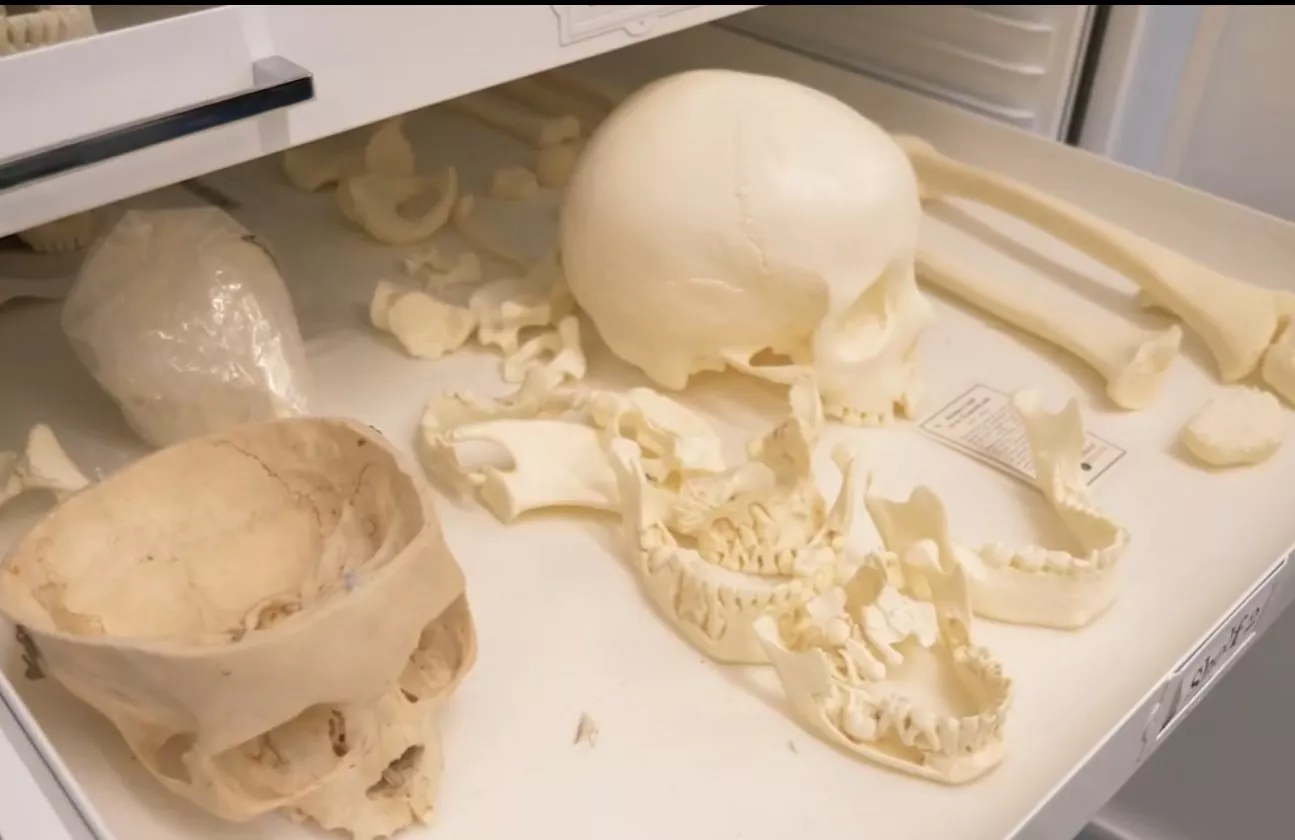
When biological anthropologists are trying to determine the number of individuals found in a site with comingled skeletal remains, one of the things they can turn to is the sequence of fusion of different parts of the bones to each other (the union of primary and secondary ossification centers), which happens during childhood and adolescence.
Understanding the most common fusion trajectory of primary and secondary ossification sites in a population allows researchers to group skeletal elements that likely go together based on their fusion status, as separate ossification centers of the skeleton fuse at different ages.
Though this comparative approach could be relatively easily implemented in a variety of field situations as it does not require many resources, it is limited by the lack of understanding of human variation in skeletal fusion within and across different populations.
New research published in The American Journal of Physical Anthropology by anthropology major Makenna Lenover ’19 and Assistant Professor of Anthropology Maja Šešelj seeks to further that understanding through the first systematic investigation of world-wide variation in the sequence of fusion of primary and secondary ossification centers.
“Thus far, published studies and the most recent reference sequences focused almost exclusively on European or European-descended populations,” says Šešelj. “The really valuable contribution of our study is that it includes many different populations from different parts of the world, which have been under-represented in this area of study.”
In doing the research, Lenover was able to use data collected by Šešelj, who, in doing her doctoral research, traveled to museums and universities in North America, Africa, East Asia, and Europe to collect data from eight different skeletal collections.
Lenover and Šešelj found considerable variation within and among different geographic groups. However, there are shared commonalities across different samples that can facilitate differentiation of multiple individuals. With fewer outliers, the completing fusion trajectories are potentially of greater practical use in forensic and bioarcheological practice than the beginning fusion trajectories.
An anthropology major with a minor in biology, Lenover is now a Ph.D. student at Penn State University, one of the nation’s top graduate programs in anthropology. She is continuing to work with Šešelj. The pair are preparing a second article that expands upon Lenover’s senior thesis research, using this same dataset, but examining the relationships between the growth and length of the bones and the development investigated in this paper.
“I'm mainly working on class work before I develop more of my own research. I'm starting to think about ways we can look at growth and development from an earlier phase in developmental biology to illuminate some of these processes that we mentioned in the paper,” says Lenover.